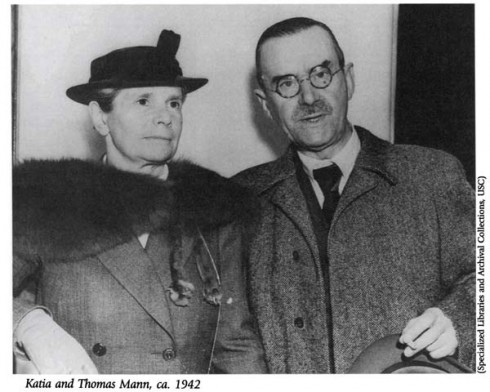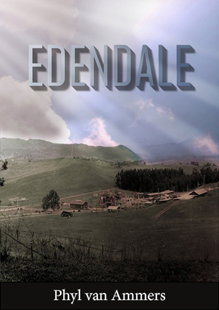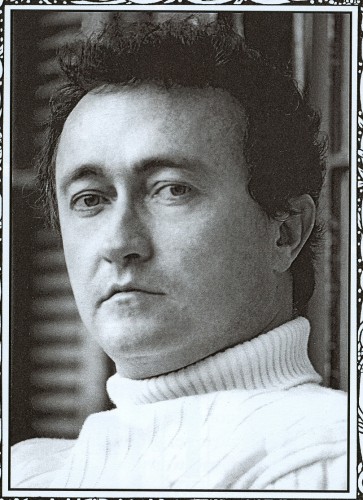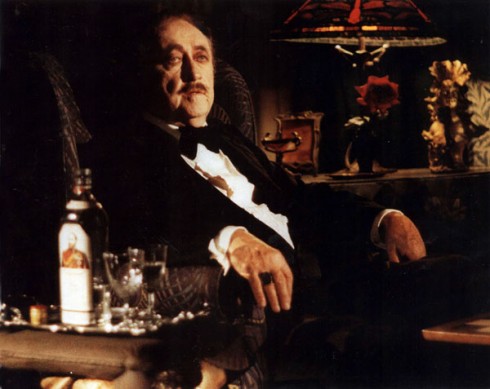Look On the Bright Side: You Can’t Burn An E-Book

The putative publisher seated at the putative Mark Twain's putative desk in the putatitive basement of the putative Territorial Enterprise newspaper building, C Street, Virginia City, Nevada. Photo: Lionel Rolfe, c. 1989
BY NIGEY LENNON
In Spring 2011, I found myself — as I often have — unemployed, unfocused, subject to chilling if not entirely unexpected visits from the Nameless Dread by night. Due to the sagging economy, all of my attempts to secure editorial or publishing work had proven worse than futile. My second career, music, was similarly problematic because of drastic changes in the industry and my own reluctance, at the ostensibly dignified age of fifty-something, to play in toilets for peanuts. My literary agent had seemingly vanished from the face of the Earth, and I couldn’t say I blamed him: despite prolonged and agonizing efforts, it had become painfully obvious he was never going to unload a single one of my book projects even after selling his immortal soul. In short, the Universe had apparently seized a bullhorn and was announcing, to resounding disinterest, that I was ugly and my mother dressed me funny. Read more
Our Friend Curtis Harrington
A Young Curtis
By Jon Zelazny
Curtis Harrington was born in Los Angeles in 1926. He made short films as a teenager, graduated from USC, and began his Hollywood career in the 1950’s. By the end of the decade, he was directing: independent films, studio pictures, made-for-TV movies, and episodic TV. He completed his last short film in 2002, and died in 2007 at the age of 80.
I knew Curtis well in his final years, as did writer-producer Dennis Bartok, the former head programmer of L.A.’s famed American Cinematheque. Read more
Faustus in The Palisades

Thomas Mann & Wife Katia argued with my mother, Yaltah Menuhin, in 1942. Special Libraries and Archival Collections, USC
By LIONEL ROLFE
I BECAME obsessed with the twentieth century’s most famous musical and literary controversy simply because one afternoon back in the fifties I was hit over the head with a viola case by the son of Germany’s greatest living writer. I was sitting with my mother in the back seat of the family Hillman Minx, going south on Overland Avenue. We had just cleared the hill on the way down to Venice Boulevard. My father and Michael Mann, son of the Nobel Prize-winning author Thomas Mann, were in the front seat. We were on our way to USC, where Michael and my mother were going to give one of the concerts broadcast every Sunday on the old classical music station, KFAC. Read more
The Twilight of Industrial Society
Leslie Evans
I spent several days at the end of May on a farm in the Appalachian Mountains near Artemas, Pennsylvania. Some 180 people had gathered there for a conference billed as The Age of Limits: Conversations on the Collapse of the Global Industrial Model. Most had driven in from the Eastern seaboard, camping in little dome-shaped tents in the dense forest that fills the majority of the 165 acre Four Quarters InterFaith Sanctuary. Four Quarters is nominally a church. Scattered around the property are little altars – to the Indian elephant god Ganesh, the Buddha, and other deities. The central spiritual focus is its Circle of Standing Stones, forty-two 10,000 pound monoliths set upright in a half circle, erected with volunteer labor over the last seventeen years. They plan to complete the circle in the decade to come. The sanctuary is off the grid, provides its own electricity (shut off at night), and grows most of its own food on thirty acres of arable land. The operation’s patriarch, Orren Whiddon, a fifty-five-year-old retired mechanical engineer, oversees a first-rate machine shop on the premises that makes replacement parts for people in nearby towns.
I heard of the conference from a posting on the Energy Bulletin website ( www.energybulletin.net ) of the Post Carbon Institute, a think tank in Santa Rosa, California, devoted to the study of natural resource depletion, particularly of oil, climate change, and limits to economic growth. Four of the most prominent writers on peak oil and the threat it poses to the world economy were scheduled to speak: John Michael Greer, author of The Ecotechnic Future: Envisioning a Post-Peak World ; Tom Whipple, a retired CIA analyst who is editor of the daily Peak Oil News and the weekly Peak Oil Review, both published by the Association for the Study of Peak Oil-USA; Gail Tverberg, who writes widely under the title Gail the Actuary and maintains the website Our Finite World ( www.ourfiniteworld.com ); and Dmitry Orlov, a Russian-born author who witnessed the collapse of the Soviet Union and predicts a similar fate for the United States. Read more
SWAPPING STATE DINNERS FOR TV DINNERS
By Bob Vickrey
Actress Meryl Streep’s skillful portrayal of the great gourmet chef Julia Child in the 2009 movie “Julie and Julia” prompted a vivid memory of my first meeting with Southwest cooking legend Helen Corbitt.
In the early 1970’s I traveled to Dallas as a publisher’s representative for a luncheon with Helen and Stanley Marcus, President of Neiman Marcus, to arrange a book signing party launching Corbitt’s latest cookbook. She was then Executive Chef at Neiman’s famous Zodiac Room, and our upcoming event was expected to rival any Dallas social shindig that year. Read more
Edendale Now Available in Paperback
 Last month we announced that Phyl van Ammers novel Edendale, long serialized here on Boryanabooks, had been published as an Amazon Kindle book. Now we can add that there is a full paperback edition, also available from Amazon. Now is your chance to read Phyl van Ammers’ generations-long tribute to the people of the near mythical Edendale in Los Angeles’s northern hills in one convenient format. Her warm reconstruction of the past seventy years of Echo Park, Silver Lake, and their adjacent neighborhoods will please current and former residents and the numberless visitors who know these streets well. Read more
Last month we announced that Phyl van Ammers novel Edendale, long serialized here on Boryanabooks, had been published as an Amazon Kindle book. Now we can add that there is a full paperback edition, also available from Amazon. Now is your chance to read Phyl van Ammers’ generations-long tribute to the people of the near mythical Edendale in Los Angeles’s northern hills in one convenient format. Her warm reconstruction of the past seventy years of Echo Park, Silver Lake, and their adjacent neighborhoods will please current and former residents and the numberless visitors who know these streets well. Read more
Honey Demands Justice
By Honey van Blossom
(Honey is a Belgian Marxist former strip-tease artiste.)
Honey van Blossom
Barlow Hospital proposed changes to zoning, height and density regulations on the land at an entrance to Elysian Park that it has owned since 1902.
Walter Jarvis Barlow purchased 25 acres of meadowland next to the city-owned Elysian Park on Chavez Ravine Road for $7,500 from J. B. Lankershim for a tuberculosis hospital. Barlow convinced Lankershim to donate $1,000 back to him, and he received a $1,300 donation from Alfred Solano. The location seemed ideal because the surrounding hills provided for clean air and the neighboring Elysian Park seemed to insure against any future development.
Los Angeles did not adopt land use regulations called zoning until 1909 to 1915. San Francisco had earlier restricted dance halls, livery stables, slaughterhouses, saloons and pool halls. In 1885, New York state limited the height of tenements. In 1909, the United States Supreme Court upheld height restrictions in Boston in Welch v. Swasey 214 U.S. 919. In 1915, Hadacheck v. Sebastian, 239 U.S. 394, the United States Supreme Court upheld a city ban on brickyards. Although lower courts found zoning unconstitutional, the United States Supreme Court decision in Village of Euclid v. Amber Realty, 272 U.S. 365 (1926), has been consistently interpreted to mean that local government’s “police power” allows it regulate land so long as it is in the public interest to do so, although there is the Fifth Amendment/14th amendment prohibition against government taking property without just compensation. Read more










